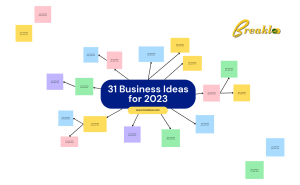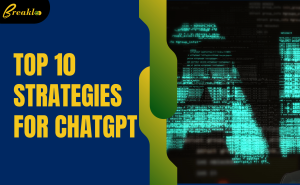Attention is the New Currency: Elevate Your Brand with Push Notifications
We live in a digital world, and today technological advancements has rendered that consumer attention is the new currency. Selective consumers force brands to rise above the noise. Top of mind but very effective access — Push notifications as a mobile marketing bait In fact, Invesp shows that 71% a user return rate over two months after installing an app by sending only one single onboarding push notification in the first week of use.
Strategic placement, compelling messaging, and creative designs can enhance conversion rates, user engagement, and overall profitability. This guide explores the power of push notifications, from defining them to implementation best practices:
- What is Mobile Marketing?
- What Are Push Notifications?
- How Do Push Notifications Work?
- Types of Push Notifications by Platform
- Types of Push Notification Marketing Campaigns
- Email Marketing + Push Notifications: A Winning Duo
- How to Use Push Notifications and Email Together
- Using Push Notifications in Paid Advertising
- Setting Up Push Notifications (Google Ads Mobile App)
- Best Push Notification Tools
- Push Notification Best Practices
What is Mobile Marketing?
More than calling marketing, we can say it mobile marketing (marketing through smart phone and other flatscreens) which help to reach target audiences on-the-go. It includes advertising on apps, mobile web ad campaigns via SMS and push notifications. Their goal is to reach their audiences in a way that feels personal and interactive (and on the one device we all use more than anything else).
What Are Push Notifications?
Push notifications are a powerful mobile-first communication channel that’s used by every successful app today. These small, pop-up messages are sent to users devices by a mobile app and can be viewed from the device lock screen when an app isn’t currently in use. Unlike other communication channels like email, push notifications are designed to be viewed in real-time and often trigger immediate engagement. They can be used to convey reminders, updates, promotions, and more.
How Do Push Notifications Work?
Before we dive into the mechanics, you need to understand some key terminology:
- Operating system push notification service (OSPNS): Each mobile operating system (OS), such as iOS and Android, has its own service.
- App publisher: After enabling their app with one or more OSPNS, the publisher (app owner) uploads it to the app store.
- Client app: An OS-specific app installed on the user’s device that receives all push notifications.
These elements work together in four key stages:
Phase 1: OSPN registration
- The app publisher registers with the OSPNs.
- Each OSPN gives the app publisher an application programming interface (API) to allow the app to communicate with the service.
- The app publisher adds a software development kit (SDK) to the app, which is a code library specific to the OSPNS.
- The app publisher adds the app to the app store.
Phase 2: App installation
- The user visits an OS app store and installs the app.
- Once the user opens the app, unique identifiers (IDs) for both the app and the device are registered within OSPNS.
- The OSPN passes the IDs back to the app and sends them to the app publisher.
- The app publishers store the registration details, including the IDs.
Phase 3: Sending push notifications
- The app publisher creates a manual message through a message composer user interface (UI). Alternatively, they can set up an automated message and send it via the API.
- The app publisher defines the audience to receive push notifications, and decides whether to send the message immediately or schedule it for later.
Note that you can personalize push notifications to different segments in your user base. First, you’ll need to gather user ID data and install a specialized interface for writing, targeting, and sending messages.
Phase 4: Opting in
Every OSPN has different opt-in processes. On iOS, users have to give explicit permission to receive push notifications. On Android, it’s the reverse – users have to manually opt out.
Once the user agrees to receive push notifications, you can start engaging them to bring them to your app.
Types of Push Notifications by Platform
Push notifications can be sent across various devices, including:
- Web Browser Push Notifications: Appear on a mobile web browser, even without app downloads.
- Mobile Push Notifications: Sent through apps and appear on smartphones or tablets.
- Desktop Push Notifications: Similar to mobile notifications but appear on desktops.
- Wearable Push Notifications: Sent directly to smartwatches or fitness trackers.
Types of Push Notification Marketing Campaigns
Customer Service Push Notifications
These enhance customer experience by providing:
– Order updates
– Shipping confirmations
– Delivery notifications
– Product availability alerts
– Appointment reminders
Marketing Push Notifications
Designed to engage customers with promotional messages, including:
– Limited-time offers and discounts
– New product announcements
– Event reminders
– Cross-selling or up-selling opportunities
Email Marketing and Push Notifications:
While email marketing remains effective, push notifications cut through inbox clutter. With average click rates of 1-2% for emails and 28% for push notifications (BusinessofApps, 2023), combining both can create a winning marketing strategy.
How to Use Push Notifications and Email Together
Example scenario for a new delivery service app:
- Welcome Email: Introduce app features and benefits, urging profile completion.
- Push Notification #1: Reminder to complete profile setup.
- Profile Setup Email: Guide for profile setup with incentives.
- Feature Showcase Email: Highlight key app features.
- Push Notification #2: Promote specific app features.
- Delivery Confirmation Email: Confirm successful delivery and thank users.
- Push Notification #3: Request feedback on delivery experience.
- Ongoing Engagement: Continue with updates, offers, and personalized recommendations.
Setting Up Push Notifications in the Google Ads Mobile App
For iOS Devices:
- Access settings via the More option on the navigation bar.
- Tap Enable Notifications.
- Select Notifications.
- Click Show Notifications.
For Android Devices:
- Select Settings via the More option on the navigation bar.
- Tap Enable Notifications.
- Choose Notifications.
- Select Show Notifications.
Choosing Notification Categories:
- Access Settings via the More option.
- Choose desired notification categories and tap Show Notifications.
Best Push Notification Tools
- OneSignal: Free (with paid options for more support); used by Uber, Adobe.
- Google Firebase: Free; integrates well with Google Analytics.
- Leanplum: Custom quotes; comprehensive mobile marketing tools.
- PushBots: Starts at $29/mo; offers automation and robust analytics.
- PushCrew: Free for up to 2,000 subscribers; ideal for web push notifications.
- Airship: Starts at $99/mo; offers predictive analytics and AI optimization.
Boost Click-Through Rates with Effective Push Notification Campaigns
Push notifications are a potent tool for increasing click-through rates and engaging your audience. Breakloo Digitals offers push notification services to help businesses enhance their mobile marketing strategies and achieve higher customer engagement. Contact Breakloo Digitals today for expert guidance on leveraging push notifications, email marketing, and PPC services to drive results.



